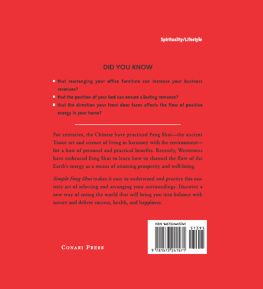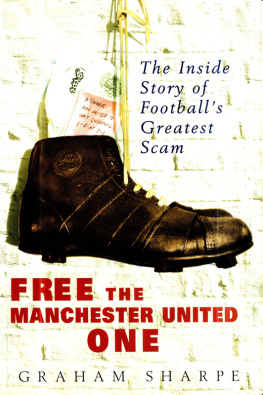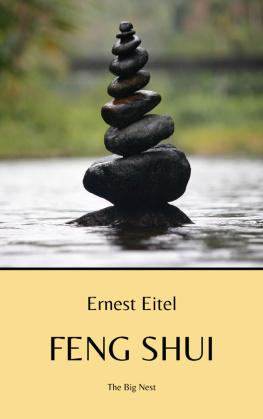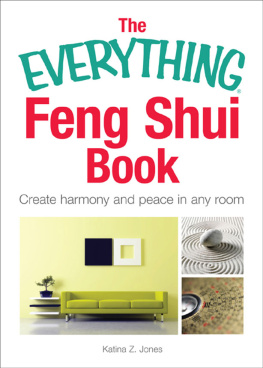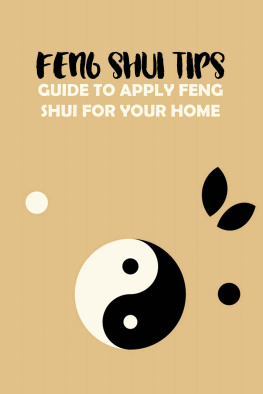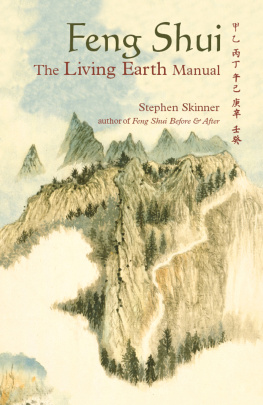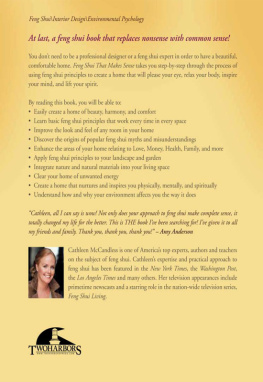
All Rights Reserved. No part of this book may be used or reproduced in any manner whatsoever without written permission, except in the case of brief quotations in critical articles or reviews. For information, contact Conari Press, 2550 Ninth Street, Suite 101, Berkeley, California 94710.
Conari Press books are distributed by Publishers Group West.
Book and Cover design by Claudia Smelser
Cover Illustration by Suzanne Albertson
Interior Illustrations by Lei Yang
Library of Congress Cataloging-in-Publication Data
Sharp, Damian
Simple feng shui / Damian Sharp.
p. cm. (A simple wisdom book series)
Included bibliographical references and index.
ISBN: 1-57324-157-1
1. Feng-shui I. Title II. Series
BF1779.F4S475 1999
133.3'337dc21
9921083
CIP
Printed in the United States of America on recycled paper
99 00 01 02 03 RRD(C) 10 9 8 7 6 5 4 3 2 1
www.redwheelweiser.com
www.redwheelweiser.com/newsletter
To Lei Yang
SIMPLE FENG SHUI
one
THE FASCINATING ART AND SCIENCE OF FENG SHUI
Observe the mountains and rivers to know the yin and the yang,
Observe the streams and springs to know the source of the waters.
From the Shih-ching
(Book of Poetry, c. 800600 B.C.)
I n recent years, Westerners have become very interested in} Feng Shui, the ancient Taoist art and science of living in harmony with the environment. Feng Shui is a way of understanding the flow of the Earth's energy and cooperating with it rather than opposing it, and of channeling it for beneficial results.
The ancient Chinese observed how the erratic influences of wind and water could be affected by alterations in the contours and shapes of the landscape. They saw, for instance, how the building of high towers could result in gusting winds, how the digging of wells could cause natural streams to dry up, and how diverting waters for irrigation could leach the soil, causing salts to rise up and make once-fertile land arid. If these human changes could affect such powerful natural forces, it was only logical that they would exert equally as profound an influence on the lives and affairs of human beings. These ancients also came to believe that each building has its own life, determined by its location, orientation, design, surroundings, and even the time it was built, some being blessed by good fortune and others cursed by misfortune. From these perceptions came a whole system of observing, enhancing, and altering the flow of natural energies.
Feng Shui offers us a different way of seeing the world, and when practiced, its effect on the way we view things around us is profound indeed. That's because Feng Shui makes us aware that energy resides in all things, and that the way energy flows or doesn't flow has a significant effect on our happiness and well-being.
For centuries Feng Shui has been used by the Chinese to select building sites, design homes, cities, and towns, and bury the dead. There are two kinds of Feng Shui: Yang, which deals with the orientation and shape of buildings and objects, and Yin, which deals with graves and tombs. There are many Chinese stories and legends about ghosts, unhappy with their graves because of the bad Feng Shui of a burial site, who return to haunt the living.
This book is a simple and very basic introduction to Yang Feng Shui and is designed to help you make changes to your environment that will enhance the positive effects of your surroundings and counter those that are harmful.
Yin and yang are the two complementary polarities of Taoist philosophy. Taoism is one of the three major religions of ancient China (the other two are Confucianism and Buddhism); tradition holds that it was founded around the sixth century B.C. by Lao-tzu. The term Tao means the Way, or the forces inherent in nature; it also refers to a code of behavior that is in harmony with the natural order, as set down in the Tao-te-Ching, Taoism's most sacred scripture, which was written by Lao-tzu. The goal of Taoism is, through self-discipline and understanding, to become one with the Tao itself, to be in complete harmony with the invisible and visible forces of nature.
According to Taoism, first there was spirit, or Heaven, which the Taoists represented as a circle. After Heaven, there was matter, or Earth, which they represented as a square within the circle. From Heaven and Earth, the Taoists developed the philosophy of yin and yang. Yin is female, negative, dark, soft, still, the receptive, the Earth. Yang is male, positive, light, hard, dynamic, the creative, Heaven. Light and dark are the two primal powers, also known as firm and yielding, and as day and night.
In Taoism, light (yang) and dark (yin) designate the two primal powers of nature. These terms are extended to include the two polar forces of the universe: the positive and the negative. It is the Tao (the Way) that sets these two opposites in motion and maintains the interplay of the two forces. These two designations, light and dark, which symbolize and emphasize the cycle of change, led to the representation of the familiar symbol of yin and yang, T'ai chi t'uthe Primal Beginningwhich is the keystone of Taoist thought.
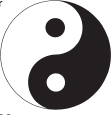
T'ai chi t'u the circular Taoist symbol of yin and yang
The two opposite principles of yin and yang complement rather than compete with each other. Neither one dominates or defeats the other. Both are needed to complete and balance the universe. To illustrate this, in the T'ai chi t'u, a small white spot is included within the yin (dark) and a small black spot in the yang (light).
Chi, the universal life energy, flows between spirit and matter. Chi is neither yin nor yang, but enhances both, always flowing between the two, seeking a natural balance. When the flow of chi is unencumbered, our lives are enriched; when it is disrupted or distorted, it turns into a negative form of energy known as sha, which can cause sickness, conflict, loss, destruction, and even death. Chi, like wind and water, moves in gentle, flowing curves (represented by the S-curve in the T'ai chi t'u) and retains a temporary impression of whatever it has flowed around. Sha, on the other hand, moves in hard straight lines.
The viewpoint of Feng Shui is not unique to the Chinese; elements of it can be found in the religious beliefs of nearly all indigenous peoples, from Australian Aborigines to the people of Bali and Indonesia to the native tribes of Southeast Asia and the Pacific, the Americas, Siberia, and Africa. In Europe, the aweinspiring sense of the innate and hidden powers in nature was central to the beliefs of the ancient Greeks, the Celts, and the Romans. All share a common sense of awe and reverence for the natural world, and all have rules concerning human behavior in relation to the absolute respect for nature. The remarkable thing about Feng Shui is that it represents a sensibility shared with all of these cultures, and is the product of a highly advanced and complex civilization.
When we practice Feng Shui, we are acting as responsible stewards and guardians of the environment and ensuring a continued and pragmatic reverence for and preservation of the natural beauty and innate life-giving spirit-force of our planetthe Earth.
In the late twentieth century, Feng Shui is finding increasing acceptance in the West among architects, city planners, landscape and interior designers, real estate agents, business executives, and homeowners. In Hong Kong, Taiwan, Singapore, and other places where there are large Chinese populations, it is regularly employed as a matter-of-fact and vital part of everyday life.
Next page
